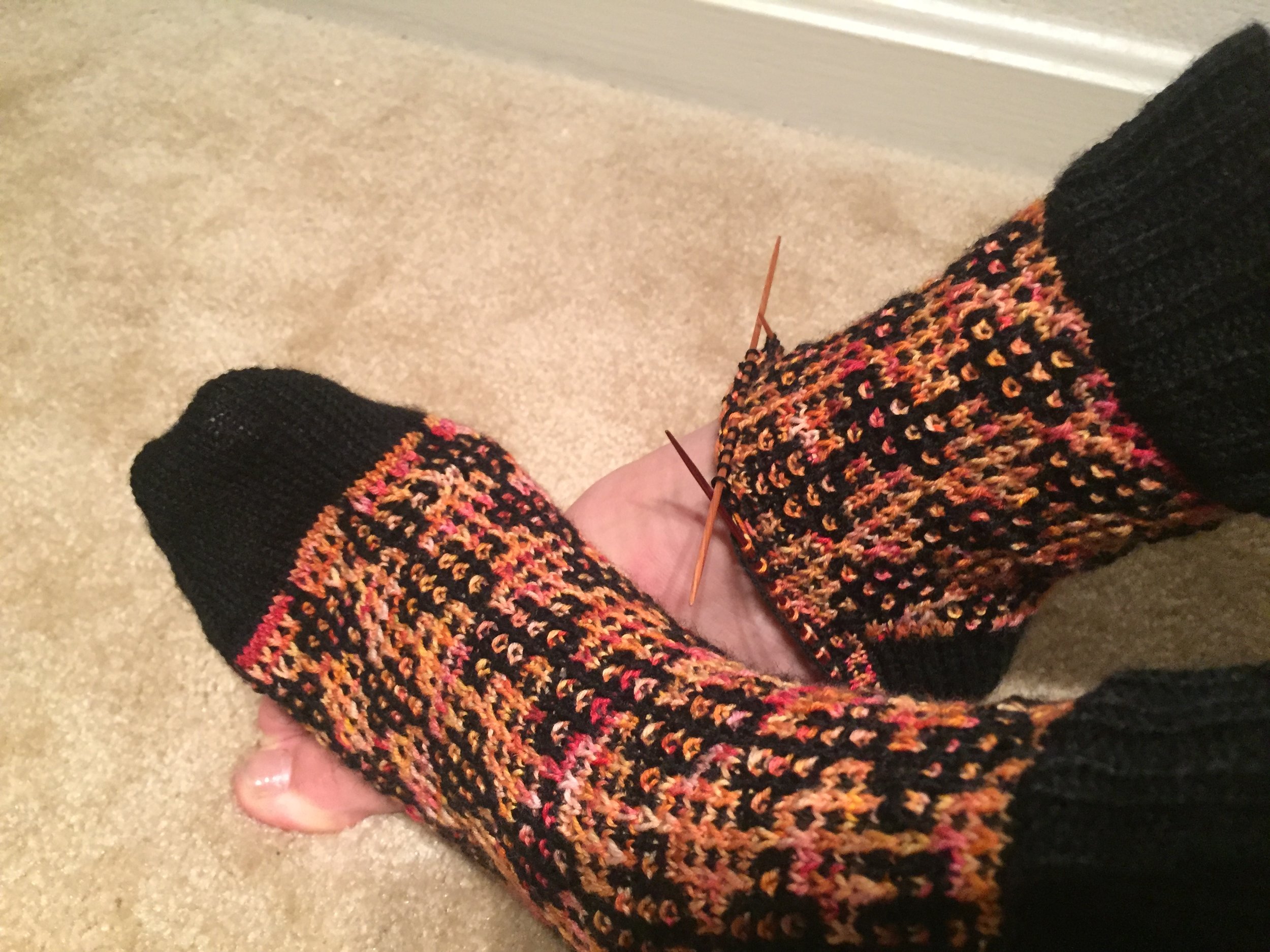The dog hair was fairly short, and not super soft. I decided that it would do well as an occasional yarn in a larger project, and that a wool lap blanket would be nice. That way I could use a softer wool for the majority of the blanket, but the dog hair could still be part of it.
In spinning the yarn I had several considerations. Mainly I wanted to make sure that my yarn didn’t shed. I also wanted to use some angora bunny fur to help with the softness. What I ended up doing was to spin two medium/fine singles of dog and a single of angora, both with a Z twist. I also spun a medium/thick (all on my scale of such things, and keep in mind that I typically spin for lace projects) S twist single of shetland wool. Each of the Z twist singles were overplied against a thread (S twist), and then those three single+thread combinations were plied (Z twist) along with the wool. The plan is that the finer single and thread will help to bind the dog and angora into the yarn, so that the yarn doesn’t shed, while the wool helped to provide some bulk and elasticity. I’m really pleased with how the yarn turned out, and I really like how it looks. I’m planning on doing this again, only with two strands of bunny (and no dog) for interest yarns in other projects. This time I used a light blue thread to ply the bunny against, and next time I think I’ll mix that aspect up with more/brighter colors. If you look carefully you can see the blue occasionally in the pictures of the yarn below.
The yarn turned out to be a heavy worsted weight.























































































